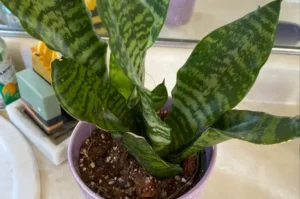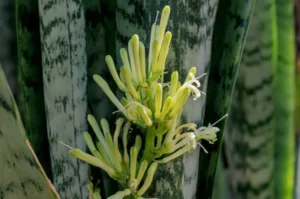Looking to green up your space but not sure where to begin? If you’re a beginner in the world of indoor gardening, the snake plant (also known as Sansevieria or Dracaena trifasciata) is a perfect choice. These stunning, hardy plants are low-maintenance, stylish, and come with a host of benefits—from purifying the air to boosting your mood.
In this complete beginner’s guide to snake plants, you’ll learn how to start growing snake plants indoors, even if you’ve never touched soil before. Whether you’re living in a small apartment or a spacious home, snake plants are incredibly adaptable and rewarding to grow.
Why Snake Plants Are Ideal for Indoor Gardening
Before diving into the planting process, let’s understand why snake plants are so popular among new plant parents:
- Low maintenance: Needs minimal watering and thrives on neglect.
- Air-purifying qualities: According to NASA’s Clean Air Study, snake plants can remove toxins like formaldehyde and benzene.
- Aesthetic appeal: With tall, upright, sword-like leaves, snake plants add a modern touch to interiors.
- Tolerant of light variations: From sunny spots to shady corners, they can handle it all.
For people who often forget to water their plants or don’t have a green thumb, growing snake plants indoors is a smart start.
Types of Snake Plants You Can Grow Indoors
There are over 70 species of snake plants, but here are the most beginner-friendly ones for indoor settings:
Sansevieria trifasciata ‘Laurentii’
The most common type with dark green leaves and yellow borders. Great for bright rooms or sunny windows.
Sansevieria ‘Moonshine’
Silvery-green leaves, sleek and elegant. Perfect for modern or minimalist interiors.
Sansevieria cylindrica
Round, tubular leaves that grow upright or braided. A unique option for contemporary spaces.
Sansevieria ‘Black Gold’
Dark green leaves bordered by golden yellow edges. Thrives in low to medium light.
Choose the variety that best fits your décor and lighting conditions.
Tools and Supplies You’ll Need
Before you begin, gather these items:
- A healthy snake plant
- Well-draining potting mix (cactus or succulent soil)
- A pot with drainage holes
- Watering can or spray bottle
- A bright spot indoors (east or north-facing window is ideal)
- Gardening gloves (optional)
How to Pot a Snake Plant Indoors: Step-by-Step
1. Choose the Right Pot
Use a terracotta or ceramic pot with drainage holes to prevent water from sitting at the bottom and causing root rot.
2. Add Soil
Fill one-third of the pot with well-draining soil. Snake plants don’t like soggy roots, so avoid using garden soil.
3. Place the Plant
Remove your snake plant from its nursery container and gently loosen the roots. Place it in the center of your new pot.
4. Fill Around the Plant
Add more soil around the roots and press lightly to secure the plant in place.
5. Water Lightly
Water just enough to moisten the soil. Avoid soaking it. Allow excess water to drain out completely.
Indoor Snake Plant Care: What Beginners Should Know
Once your snake plant is potted, proper care is key to keeping it healthy. Here’s what to keep in mind:
Light Requirements
Snake plants prefer bright, indirect sunlight. But they’re also known for their ability to grow in low-light conditions, making them perfect for bedrooms, offices, or hallways.
Watering
Overwatering is the most common mistake with snake plants.
- Water every 2–3 weeks in spring and summer.
- In winter, reduce watering to once every 4–6 weeks.
- Always check if the top 2 inches of soil are dry before watering.
Temperature and Humidity
- Ideal temperature range: 60–85°F (15–29°C)
- They do well in normal indoor humidity, but avoid placing them near heaters or air conditioners.
Fertilizing
- Use a balanced liquid fertilizer once every 2–3 months during the growing season (spring and summer).
- Skip fertilizing in fall and winter.
Cleaning the Leaves
Dust can block sunlight, so wipe the leaves with a damp cloth once a month to keep them clean and shiny.
Common Problems and Solutions
Overwatering (Root Rot)
Symptoms include mushy leaves, foul smell, and soggy soil.
Fix: Remove the plant, cut off rotting roots, let it dry, and repot in fresh soil.
Yellow Leaves
Usually caused by too much water or poor drainage.
Leaf Curling or Browning Tips
This could be due to dry air or using tap water with chlorine. Use filtered or rainwater when possible.
How to Propagate Snake Plants Indoors
Once you’re comfortable, try propagating your snake plant. It’s an easy and fun way to grow new plants from cuttings.
Method 1: Leaf Cuttings in Soil
Cut a healthy leaf into 3–4 inch pieces.
Let the cut ends dry for 1–2 days.
Plant the cuttings upright in moist soil.
Method 2: Leaf Cuttings in Water
Place the cut end of a leaf in a glass of water.
Keep in a bright, indirect light area.
Change the water every week. Roots will appear in a few weeks.
Method 3: Division
Remove the plant from the pot and gently divide it at the root level.
Each new plant should have roots and a few leaves.
Repot in fresh soil.
Benefits of Growing Snake Plants Indoors
Adding snake plants to your home does more than just decorate a room. Here’s what you gain:
- Improves air quality
- Removes toxins
- Produces oxygen at night
- Increases humidity slightly
- Reduces stress and boosts mood
- Enhances indoor aesthetics
Whether you’re decorating a small apartment or setting up a home office, a snake plant brings life to your space without the hassle.
Conclusion :
If you’re still wondering how to start growing snake plants indoors, here’s the best advice: just start. You don’t need a green thumb or fancy tools. All you need is a pot, a snake plant, and a little patience.
These resilient, elegant plants are perfect for beginners and busy people alike. They’re forgiving, adaptable, and bring beauty and calm to any indoor space. Whether it’s your first houseplant or your tenth, the snake plant is a smart and stylish choice.
So go ahead, bring home a snake plant today and start your indoor plant journey with confidence.






